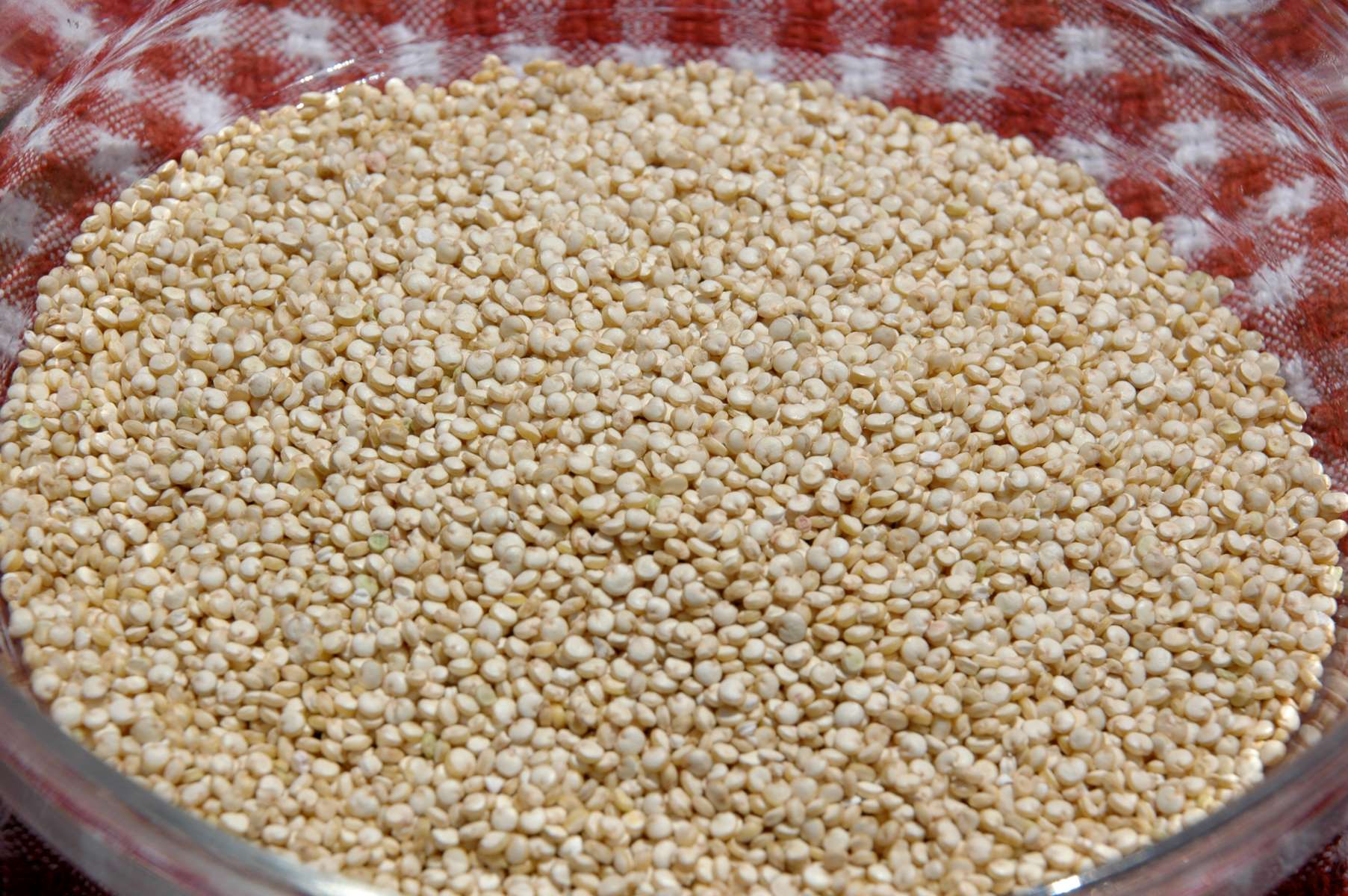Home>Food and Cooking>The Surprising And Delicious Taste Of Spam Revealed!


Food and Cooking
The Surprising And Delicious Taste Of Spam Revealed!
Published: February 2, 2024
Discover the surprising and delicious taste of Spam with our unique cooking tips and recipes. Elevate your food and cooking experience with these mouthwatering ideas.
(Many of the links in this article redirect to a specific reviewed product. Your purchase of these products through affiliate links helps to generate commission for Regretless.com, at no extra cost. Learn more)
Table of Contents
Introduction
Spam, the iconic canned meat product, has been a staple in pantries and a topic of both curiosity and controversy for decades. Loved by some and misunderstood by others, Spam has a fascinating history and a surprisingly versatile presence in the culinary world. As we delve into the realms of food and cooking, it's impossible to ignore the impact of this humble yet intriguing product. From its intriguing origins to its global popularity, Spam has carved out a unique place in the hearts and stomachs of people around the world.
In this article, we will embark on a flavorful journey to uncover the secrets behind the enduring appeal of Spam. We will explore its rich history, delve into its unique ingredients and production process, and discover the myriad ways in which it can be incorporated into delicious dishes. Additionally, we will shed light on the nutritional aspects of Spam and its widespread popularity across different cultures.
Prepare to be pleasantly surprised as we unravel the mystery and allure of Spam, exposing its delightful taste and shedding light on its culinary potential. Let's set aside any preconceived notions and embark on an adventure that will leave you with a newfound appreciation for this beloved and versatile canned meat.
The History of Spam
Spam, the beloved canned meat product, has a rich and intriguing history that dates back to the mid-20th century. The story of Spam began in 1937 when it was first introduced by Hormel Foods Corporation, a leading American food company. The name "Spam" is a portmanteau of "spiced" and "ham," reflecting its key ingredients and distinctive flavor profile.
During World War II, Spam played a pivotal role in nourishing troops and civilians across the globe. Its long shelf life, affordability, and versatility made it an invaluable source of sustenance during challenging times. As a result, Spam became synonymous with resilience and resourcefulness, earning a special place in the hearts of those who relied on it for nourishment during the war.
Following the war, Spam continued to captivate consumers with its convenience and delicious taste. It became a symbol of post-war abundance and economic recovery, earning a permanent place on grocery store shelves and in household kitchens. The 1950s marked the beginning of Spam's global expansion, as it gained popularity in countries such as Japan, South Korea, and the Philippines, where it was embraced as a versatile ingredient in traditional and fusion cuisines.
In the subsequent decades, Spam's popularity soared, transcending cultural boundaries and becoming a culinary icon in its own right. Its enduring appeal led to the creation of innovative recipes and cooking techniques, further solidifying its status as a beloved food staple. Today, Spam continues to hold a special place in the hearts of food enthusiasts, evoking nostalgia and serving as a testament to the enduring legacy of a humble yet remarkable product.
The history of Spam is a testament to its ability to adapt to changing times while retaining its core identity as a versatile and delicious food item. Its journey from wartime rations to global culinary phenomenon is a testament to its enduring appeal and the profound impact it has had on food culture worldwide.
The Ingredients of Spam
At the heart of Spam's distinctive flavor and unique appeal are its carefully selected ingredients, each playing a crucial role in shaping the iconic canned meat. The classic recipe for Spam includes a harmonious blend of high-quality pork, ham, salt, water, sugar, and a special mixture of spices. This thoughtfully crafted combination results in a savory, slightly smoky flavor that has captivated taste buds for generations.
The primary ingredients in Spam are pork shoulder and ham, which are finely ground to achieve the desired texture and consistency. This blend of meats contributes to the rich, meaty flavor that sets Spam apart from other canned meats. Additionally, the inclusion of salt and sugar not only enhances the taste but also serves as a natural preservative, ensuring that each bite of Spam delivers a burst of savory goodness.
Furthermore, the precise combination of spices used in the production of Spam adds depth and complexity to its flavor profile. While the exact composition of these spices is a closely guarded secret, their aromatic and savory notes are unmistakable, contributing to the irresistible allure of Spam.
In addition to its core ingredients, Spam may also feature variations that include additional flavors or ingredients, catering to diverse culinary preferences. These variations may include ingredients such as bacon, cheese, jalapeños, or teriyaki seasoning, offering a delightful twist on the classic Spam experience.
The meticulous selection and artful blending of these ingredients are a testament to Hormel Foods Corporation's commitment to delivering a product that consistently exceeds expectations. The result is a timeless classic that continues to inspire creative culinary endeavors and bring joy to countless individuals around the world.
As we unravel the mystery of Spam's ingredients, we gain a deeper appreciation for the craftsmanship and artistry that go into creating this beloved canned meat. The careful balance of flavors and textures exemplifies the dedication to quality that has made Spam a cherished ingredient in a wide range of dishes, from traditional favorites to innovative culinary creations.
The Process of Making Spam
The process of making Spam is a meticulously orchestrated symphony of culinary craftsmanship, where quality ingredients and precise techniques converge to create the iconic canned meat loved by millions. The journey begins with the careful selection of high-quality pork shoulder and ham, which form the foundation of Spam's distinct flavor and texture. These prime cuts of meat undergo a rigorous inspection to ensure that only the finest ingredients make their way into the production process.
Once the pork and ham have been selected, they are meticulously ground to achieve the ideal consistency, setting the stage for the infusion of signature flavors. A precise blend of salt, sugar, and a proprietary mix of spices is then added, imparting the characteristic savory and slightly smoky notes that define the essence of Spam. This harmonious amalgamation of ingredients is a testament to the artistry and expertise that underpin the creation of this beloved canned meat.
Following the flavor infusion, the meat mixture is carefully emulsified to achieve a uniform texture, ensuring that every bite of Spam delivers a consistently delightful experience. This meticulous process of emulsification is a critical step in achieving the desired mouthfeel and succulence that have made Spam a timeless favorite.
Once the emulsification is complete, the meat mixture is formed into the iconic rectangular blocks that are synonymous with Spam. These blocks are then carefully placed into cans, where they undergo a process of thermal processing to seal in the flavors and ensure long-lasting freshness. This meticulous attention to detail at every stage of the production process underscores Hormel Foods Corporation's unwavering commitment to delivering a product of unparalleled quality.
The cans of Spam are then subjected to a rigorous sterilization process, where they are cooked under controlled conditions to guarantee food safety and preservation. This meticulous approach to sterilization ensures that each can of Spam maintains its exceptional taste and texture, whether it's enjoyed immediately or stored for future culinary adventures.
From the careful selection of ingredients to the precise execution of each production step, the process of making Spam is a testament to the dedication and expertise of the culinary artisans at Hormel Foods Corporation. The result is a timeless classic that continues to captivate palates and inspire culinary creativity around the world.
The Versatility of Spam in Cooking
Spam's remarkable versatility extends far beyond its role as a beloved standalone ingredient. Its distinctive flavor and convenient canned form make it a valuable addition to a wide array of culinary creations, ranging from traditional comfort foods to innovative gourmet dishes. Whether it's pan-fried, grilled, diced, or shredded, Spam has the uncanny ability to elevate the taste and texture of diverse recipes, making it a cherished staple in kitchens around the world.
One of the most popular ways to enjoy Spam is by pan-frying or grilling it to achieve a crispy exterior and a succulent, flavorful interior. This simple yet effective cooking method unlocks the savory essence of Spam, creating a delectable crust that adds a delightful crunch to sandwiches, salads, and rice dishes. The caramelization that occurs during the cooking process enhances Spam's natural umami flavor, making it a versatile and satisfying addition to a wide range of culinary creations.
In addition to its standalone appeal, Spam serves as a versatile ingredient in a myriad of recipes, from hearty stews and casseroles to vibrant stir-fries and savory pastries. Its ability to complement an extensive range of flavors and textures makes it a valuable asset in the culinary repertoire of home cooks and professional chefs alike. Whether it's incorporated into classic comfort foods like Spam and egg breakfast burritos or utilized as a savory element in fusion dishes such as Spam musubi, its adaptability knows no bounds.
Furthermore, Spam's versatility extends to its compatibility with diverse cooking techniques, including grilling, baking, sautéing, and even deep-frying. This flexibility allows for endless culinary experimentation, enabling individuals to explore new and exciting ways to incorporate Spam into their favorite dishes. From crispy Spam fries to indulgent Spam mac and cheese, the possibilities are as boundless as the imagination.
Moreover, Spam's adaptability shines in its seamless integration with global cuisines, where it serves as a bridge between traditional flavors and contemporary culinary trends. Whether it's featured in Korean budae jjigae, Hawaiian loco moco, or Filipino spaghetti, Spam effortlessly adapts to diverse cultural contexts, adding a touch of familiarity and innovation to time-honored recipes.
In essence, the versatility of Spam in cooking transcends cultural and culinary boundaries, offering a canvas for creativity and exploration in the kitchen. Its ability to seamlessly integrate into a wide spectrum of dishes while imparting its distinctive flavor and texture makes it an indispensable ingredient for anyone seeking to elevate their culinary endeavors. Whether it's used as a comforting element in nostalgic recipes or as a bold addition to avant-garde creations, Spam's versatility continues to inspire and delight food enthusiasts worldwide.
The Nutritional Value of Spam
Spam, often celebrated for its delicious taste and culinary versatility, also offers a notable nutritional profile that adds to its appeal as a convenient and satisfying food option. While it's important to consume Spam in moderation due to its sodium content, it provides essential nutrients that contribute to overall well-being.
A single serving of Spam (56 grams) contains approximately 180 calories, making it a substantial source of energy. Additionally, it offers a significant amount of protein, with each serving delivering around 7 grams of this vital macronutrient. Protein plays a crucial role in supporting muscle health, aiding in tissue repair, and promoting satiety, making Spam a satisfying addition to meals.
In terms of fat content, Spam contains both saturated and unsaturated fats. While it's essential to moderate saturated fat intake, the presence of unsaturated fats in Spam contributes to a balanced lipid profile. Furthermore, Spam offers a small amount of dietary fiber, which supports digestive health and contributes to a feeling of fullness.
One aspect that requires attention when consuming Spam is its sodium content. A single serving of Spam contains a notable amount of sodium, which should be considered as part of an individual's overall sodium intake. Managing sodium consumption is crucial for maintaining healthy blood pressure levels and reducing the risk of cardiovascular issues. Therefore, it's advisable to be mindful of sodium intake from all sources, including processed meats like Spam.
In addition to its macronutrient content, Spam provides essential micronutrients, including iron and vitamin B12. Iron is vital for oxygen transport in the body and supports overall vitality, while vitamin B12 plays a key role in nerve function and the production of red blood cells. These nutrients are particularly important for individuals following diets that may be lacking in these essential components.
While Spam should be enjoyed in moderation due to its sodium content, it offers a range of essential nutrients that contribute to a balanced diet. When incorporated sensibly into a varied and well-rounded meal plan, Spam can provide valuable nourishment and contribute to a satisfying and flavorful culinary experience.
The Popularity of Spam Around the World
The enduring popularity of Spam transcends cultural boundaries, captivating the palates of individuals across diverse geographical regions and culinary traditions. From North America to Asia, and from Europe to the Pacific Islands, Spam has secured a place of distinction in the culinary landscapes of numerous countries, earning a devoted following and inspiring a myriad of creative and culturally resonant dishes.
In the United States, Spam has become a beloved pantry staple, cherished for its convenience, affordability, and nostalgic appeal. Its versatility in American cuisine is evident in iconic dishes such as Spam and eggs for breakfast, Spam musubi in Hawaiian cuisine, and Spam sandwiches that have become a cherished comfort food. The enduring presence of Spam in American households reflects its status as a culinary classic that continues to evoke fond memories and inspire new generations of food enthusiasts.
Across the Pacific Ocean, Spam has achieved remarkable popularity in countries such as South Korea, Japan, and the Philippines, where it has seamlessly integrated into traditional and contemporary culinary practices. In South Korea, the dish budae jjigae, or "army stew," features Spam as a key ingredient, showcasing its adaptation to local tastes and its association with historical contexts. In Japan, Spam musubi, a fusion of Japanese and American influences, has become a ubiquitous snack, combining the flavors of teriyaki-glazed Spam with sushi rice and nori. In the Philippines, Spam has found its way into beloved dishes like Spam silog, a hearty breakfast meal consisting of Spam, garlic fried rice, and a sunny-side-up egg, symbolizing its status as a comfort food with widespread appeal.
In European countries such as the United Kingdom and Spain, Spam has also carved out a niche in culinary traditions, reflecting its ability to transcend cultural borders and resonate with diverse palates. In the United Kingdom, Spam fritters and Spam sandwiches have become enduring comfort foods, while in Spain, the dish known as "Spam a la gallega" showcases the product's adaptability in traditional Spanish cuisine.
Furthermore, the global popularity of Spam extends to regions such as the Caribbean, where it has been embraced as a versatile ingredient in local dishes, and to parts of Africa, where it has found a place in culinary traditions shaped by historical influences.
The widespread popularity of Spam around the world is a testament to its ability to adapt to diverse culinary contexts, resonate with people from all walks of life, and inspire a rich tapestry of culinary creations. Its enduring presence in global cuisine underscores its status as a beloved and versatile ingredient that continues to bring joy and satisfaction to individuals across continents.
Conclusion
In conclusion, the journey through the captivating world of Spam has revealed a tapestry of history, craftsmanship, and culinary artistry that has contributed to its enduring appeal. From its humble origins as a wartime staple to its global popularity and culinary versatility, Spam has transcended the confines of a traditional canned meat product to become a cherished symbol of resilience, innovation, and cultural fusion.
The history of Spam serves as a testament to its ability to adapt to changing times while retaining its core identity as a versatile and delicious food item. Its evolution from a wartime necessity to a global culinary phenomenon reflects its enduring appeal and the profound impact it has had on food culture worldwide.
The meticulous selection and artful blending of high-quality ingredients underscore the craftsmanship and dedication that go into creating Spam. The harmonious fusion of pork, ham, salt, sugar, and a proprietary blend of spices results in a savory, slightly smoky flavor that has captivated generations of food enthusiasts.
The process of making Spam is a testament to the dedication and expertise of the culinary artisans at Hormel Foods Corporation. From the careful selection of ingredients to the precise execution of each production step, the creation of Spam is a meticulously orchestrated symphony of culinary craftsmanship.
Spam's remarkable versatility in cooking transcends cultural and culinary boundaries, offering a canvas for creativity and exploration in the kitchen. Its ability to seamlessly integrate into a wide spectrum of dishes while imparting its distinctive flavor and texture makes it an indispensable ingredient for anyone seeking to elevate their culinary endeavors.
While Spam should be enjoyed in moderation due to its sodium content, it offers a range of essential nutrients that contribute to a balanced diet. When incorporated sensibly into a varied and well-rounded meal plan, Spam can provide valuable nourishment and contribute to a satisfying and flavorful culinary experience.
The enduring popularity of Spam around the world is a testament to its ability to adapt to diverse culinary contexts, resonate with people from all walks of life, and inspire a rich tapestry of culinary creations. Its enduring presence in global cuisine underscores its status as a beloved and versatile ingredient that continues to bring joy and satisfaction to individuals across continents.
In essence, the surprising and delicious taste of Spam has been revealed, showcasing its ability to transcend cultural, historical, and culinary boundaries to become a cherished and iconic product that has left an indelible mark on the world of food and cooking. Whether enjoyed in a classic recipe or incorporated into innovative culinary creations, Spam remains a timeless symbol of culinary ingenuity and global gastronomic delight.














